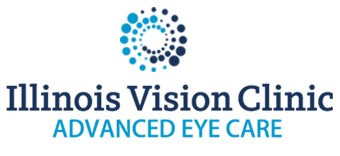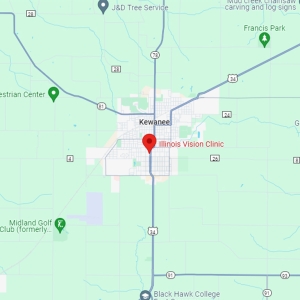Low Vision

Seeing clearly is one of life’s greatest gifts. Being able to experience what the world has to offer is done through the senses, and your eyesight is precious and must be preserved.
Low vision can affect the way that you live your life. This may hinder your ability to perform professionally, but it also may interfere with the enjoyment of activities, being with your family and other daily things you should be present for.
The gifted team at Illinois Vision Clinic is proud to serve the local community with quality vision care services, including the treatment of low vision and other eye conditions so that you can be confident in your well-being and enjoy the sights of everyday life as you live with peace of mind.
What is Low Vision?
Low vision is any visual impairment that cannot be corrected with glasses, contact lenses, or surgery.
It can result from various eye conditions, including age-related macular degeneration, glaucoma, diabetic retinopathy, and other eye diseases.
The best way to identify low vision is for us to have a professional look at what is going on behind the scenes.
Symptoms of Low Vision
Low vision can manifest in various ways, often affecting daily activities. Here are some common symptoms:
- Blurred Vision: Difficulty seeing objects clearly, even with corrective lenses.
- Reduced Central Vision: Difficulty seeing objects directly in front of you.
- Difficulty Reading: Trouble reading books, newspapers, or digital screens.
- Sensitivity to Light: Discomfort or difficulty seeing in bright light.
- Poor Night Vision: Problems seeing in low-light conditions.
- Reduced Peripheral Vision: Difficulty seeing objects in your side vision.
- Difficulty with Depth Perception: Trouble judging distances and spatial relationships.
- Eye Strain and Headaches: These can occur due to excessive eye effort.
If you experience any of these symptoms, it’s important to consult with an eye care professional like our clinic for a proper diagnosis and treatment plan.
Low Vision Services
The team at Illinois Vision Clinic offers a range of services to help individuals with low vision:
- Comprehensive Low Vision Evaluations: Our optometrists will assess your visual needs and recommend appropriate low vision aids and techniques.
- Low Vision Rehabilitation: We provide training and education to help you maximize your remaining vision and adapt to your visual impairment.
- Low Vision Devices: We offer a variety of low vision devices, such as magnifiers, telescopes, and specialized lighting, to enhance your vision and independence.
- Adaptive Technology: We can help you explore assistive technology solutions, such as screen readers and voice recognition software, to improve your quality of life.
- Support and Counseling: We provide emotional support and counseling to help you cope with the challenges of low vision.
Even with low vision, you can still enjoy a fulfilling life. With the right support and resources, you can continue to do the things you love.
Your Trusted Partners in Low Vision Eye Care
You don’t need to deal with low vision any longer. If it is put off for a longer period of time, your eyesight can deteriorate, and it will be much more difficult and costly to mitigate and reverse.
We are dedicated to helping you gain control of your life and achieve your vision goals, one step at a time. We look forward to welcoming you in a warm and inviting environment where questions are encouraged.
During your next appointment with the excellent team at Illinois Vision Clinic you can be sure you receive the best care and guidance you and your family deserve.




